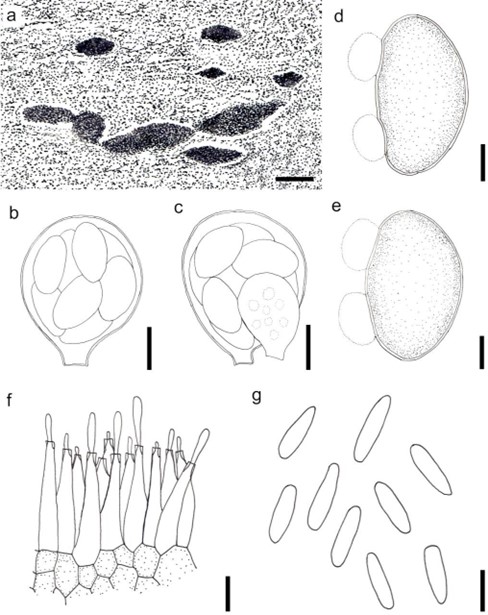Phaeochora Höhn., Sber. Akad. Wiss. Wien, Math.-naturw. Kl., Abt. I, 118: 1513 (1909)
Index Fungorum number: IF 3898; MycoBank number: MB 3898; Facesoffungi number: FoF 02125; 4 morphological species (Species Fungorum 2020).
Type species – Phaeochora chamaeropis (Cooke) Höhn.
Notes – Phaeochora was introduced by Höhnel (1909a) to accommodate Auerswaldia chamaeropis (= Dothidea chamaeropsis). Höhnel (1909a) treated A. chamaeropis as the type and also considered A. densa belongs to Phaeochora. However, Shear (1909) transferred A. densa to Sphaerodothis found an earlier name S. steinheilii for the type species of Phaeochora, and synonymized it as P. steinheilii. The two genera Phaeochora and Sphaerodothis were superficially similar and were treated as synonyms by von Arx & Müller (1954) and Joly (1961). Species in Phaeochora cause blackened regions on the host surface with stromata and ellipsoidal, fusiform or cylindrical ascospores but are different in ascomata and ascospores structure, while Sphaerodothis has cylindrical asci (Hyde & Cannon 1999). Phaeochora steinheilii is characterized by ascospores having one flattened face, with two ±pulvinate extrusions of the epispore near the apices of the flattened surface (Cannon 1992, Hyde et al. 1997a).

Figure 1 – Phaeochora steinheilii (redrawn from Cannon 1992, Hyde & Cannon 1999). a Stromata visible as blackened spot on leaf surfaces. b, c Asci without apical structures, evanescent. d, e Ascospores, golden to mid-brown, with two ± globose hyaline appendages near the apices of the flattened surface. f Conidiogenous cells developing conidia. g Conidia. Scale bars: a = 1 mm, b- c = 10 µm, d−g = 5 µm.
Species
